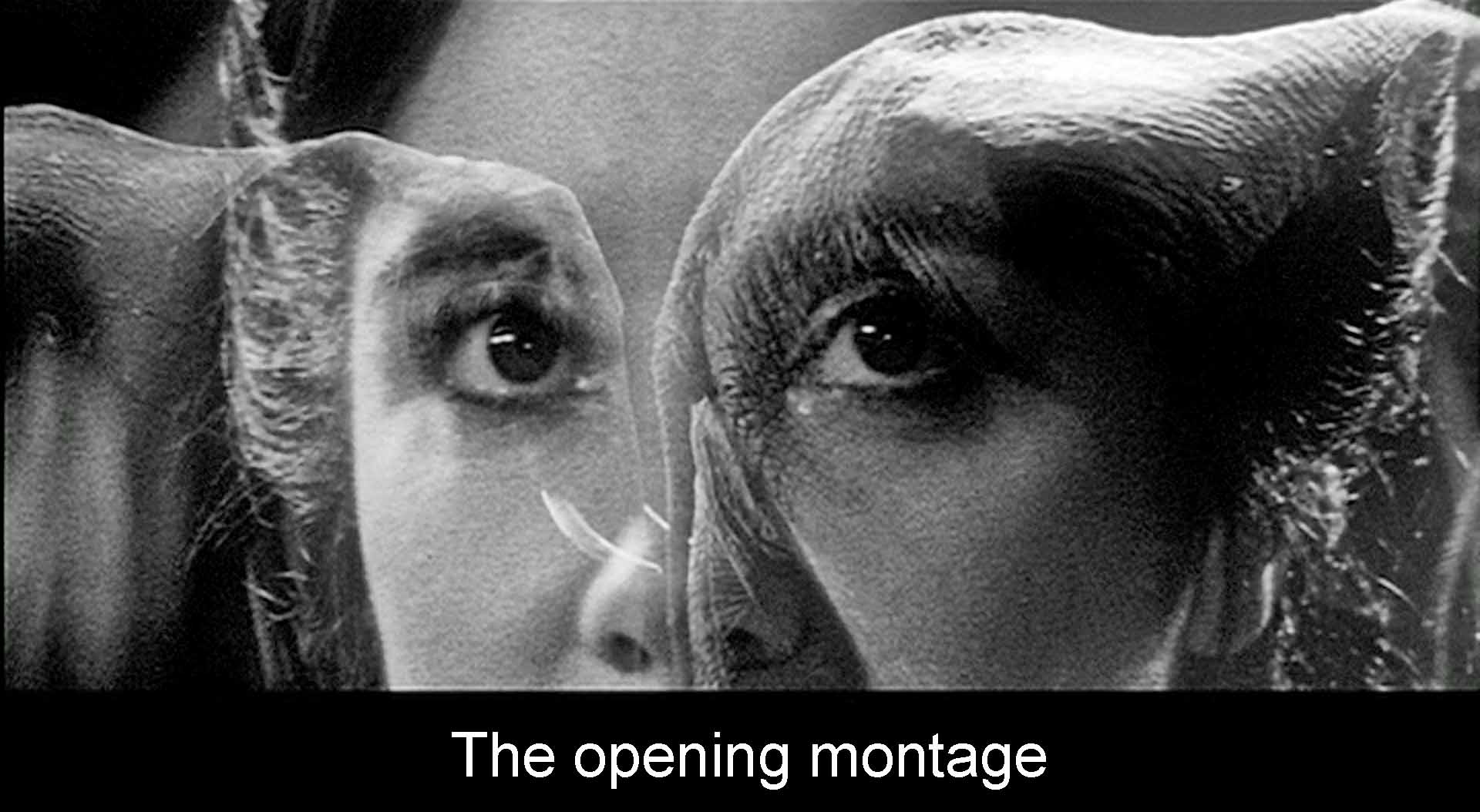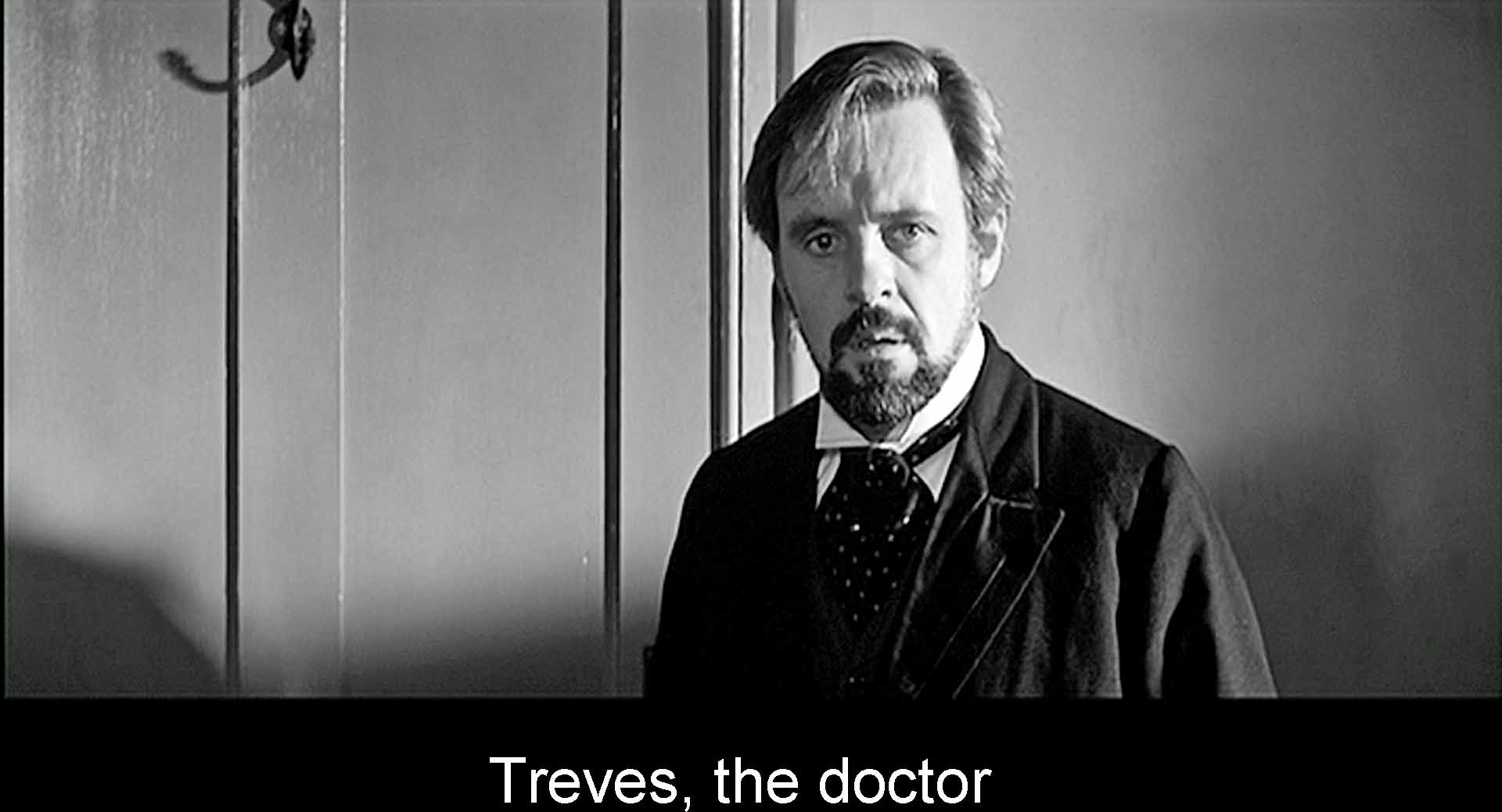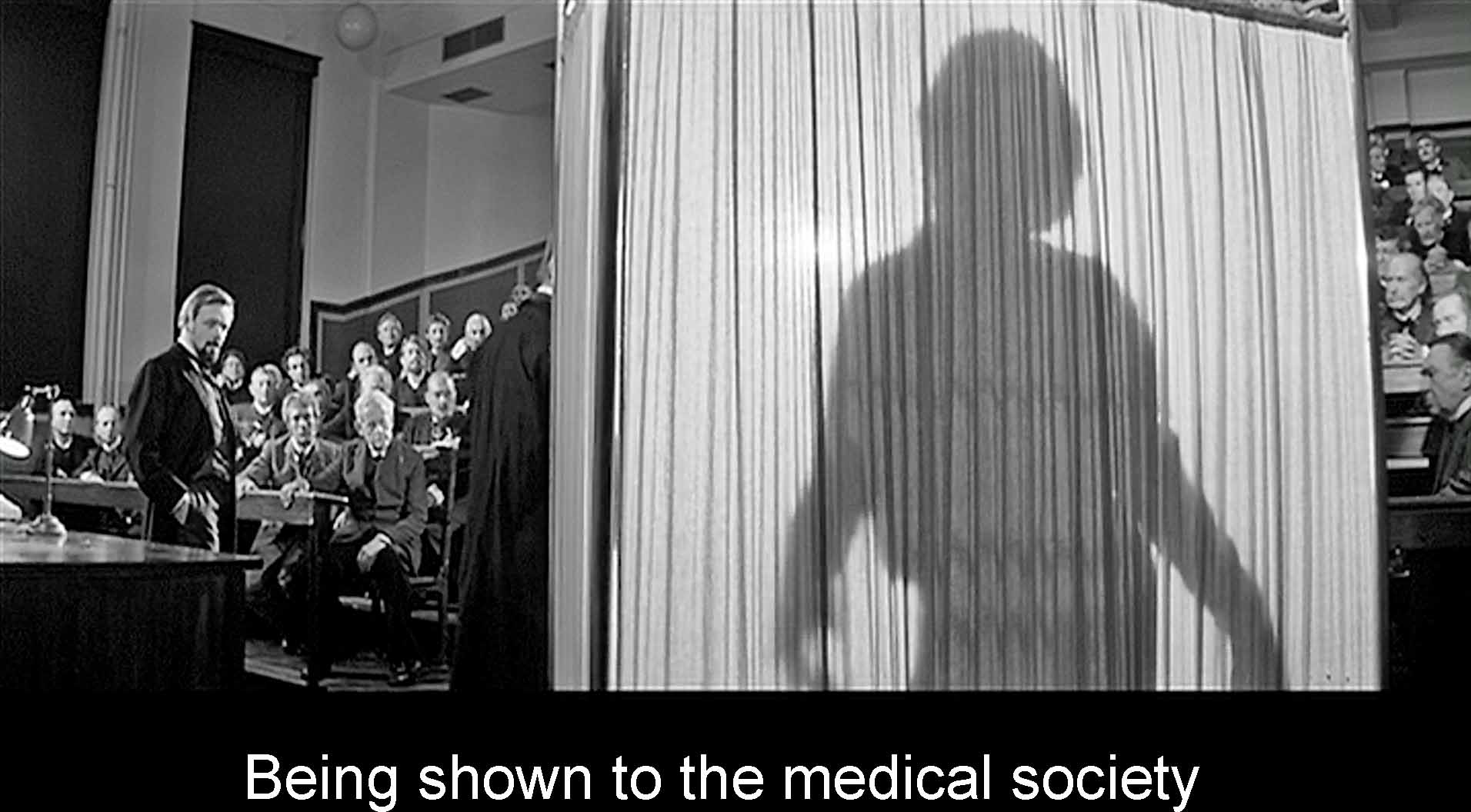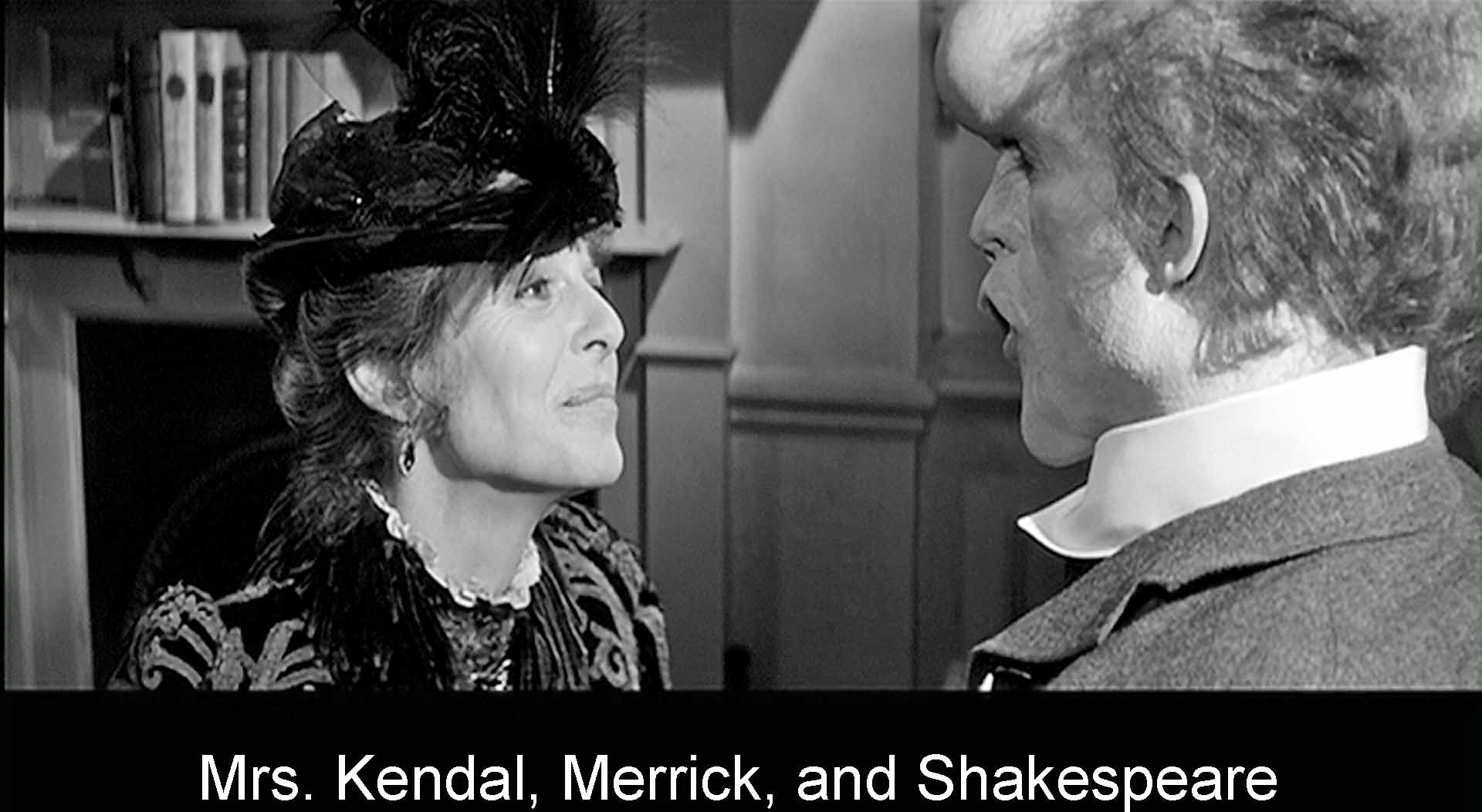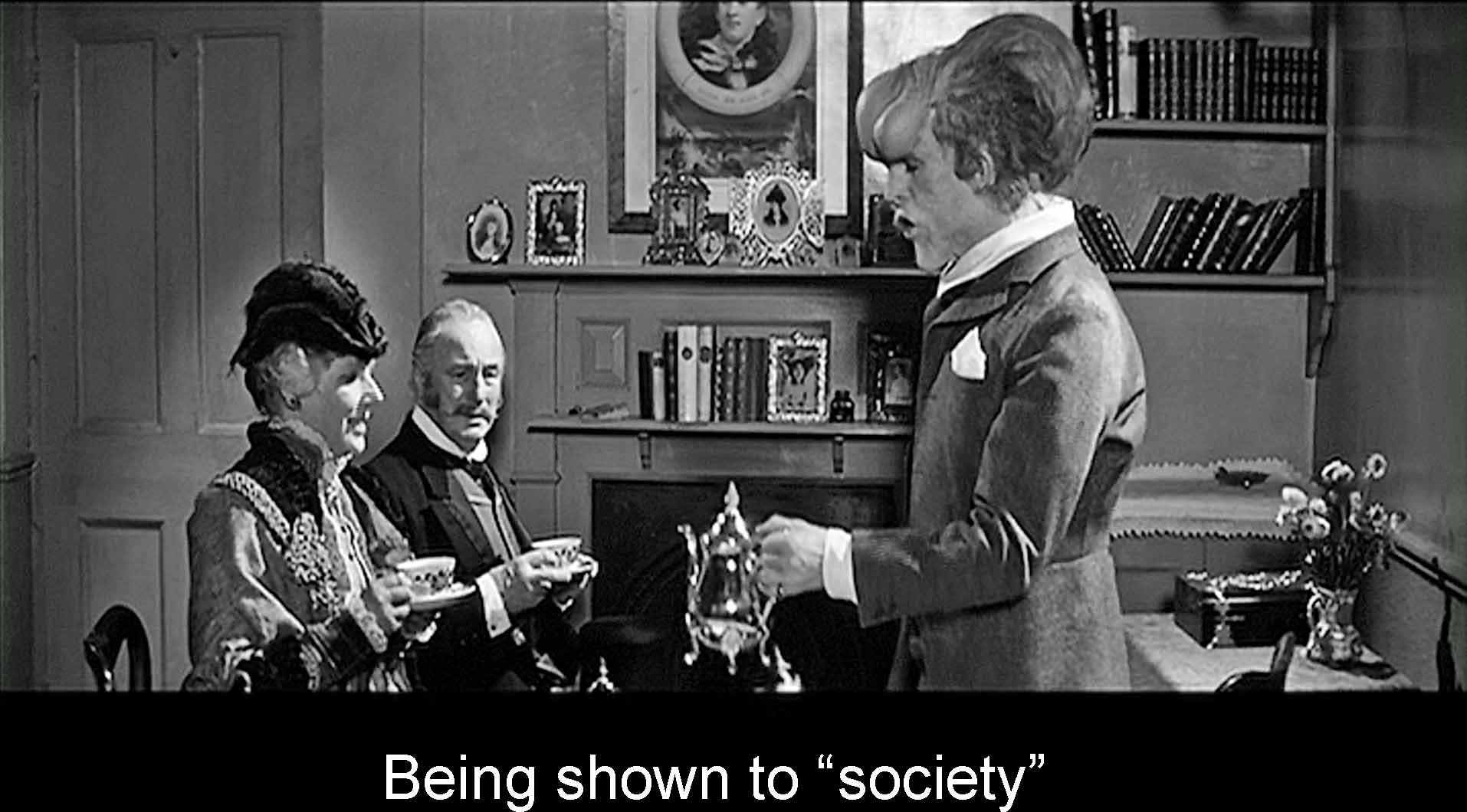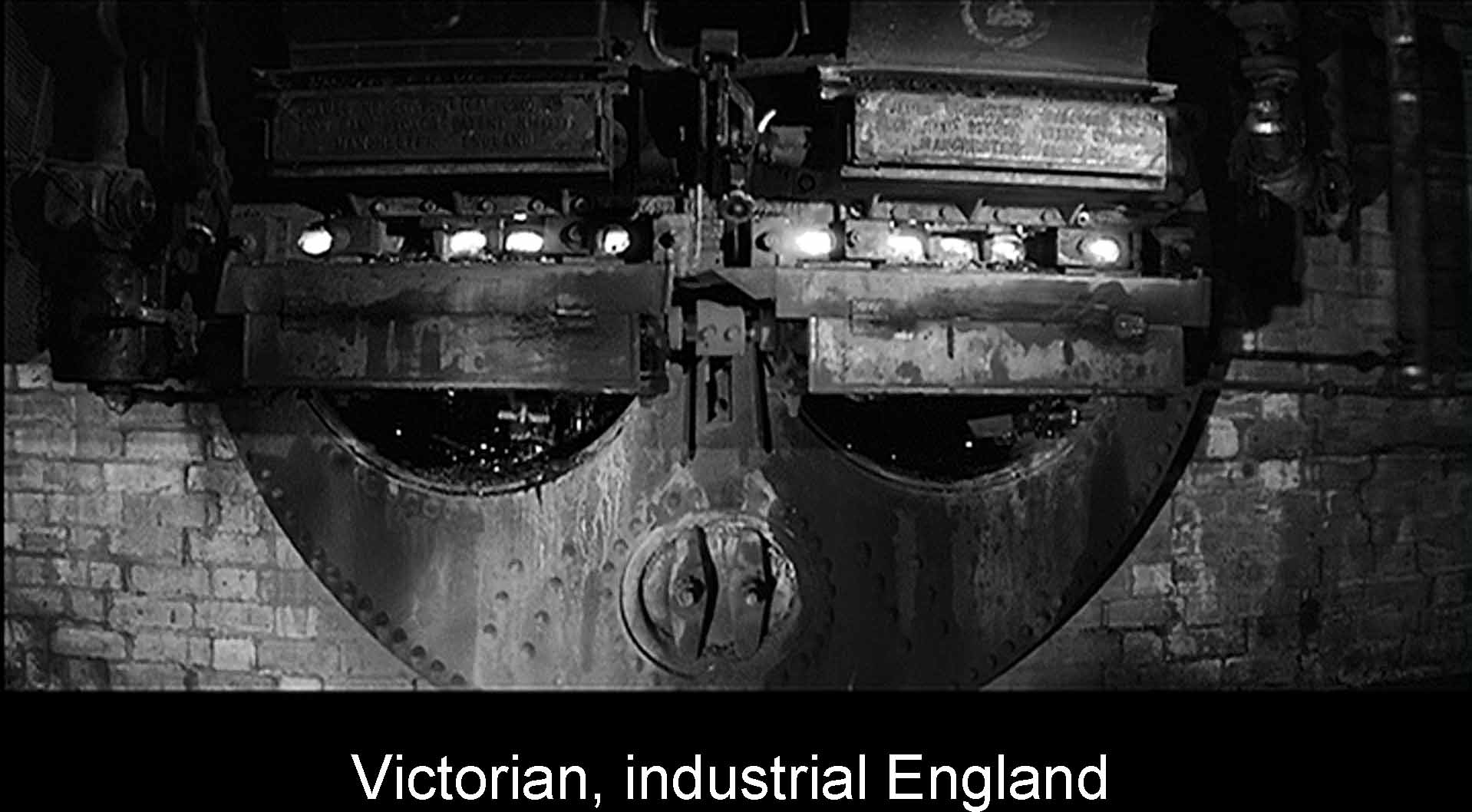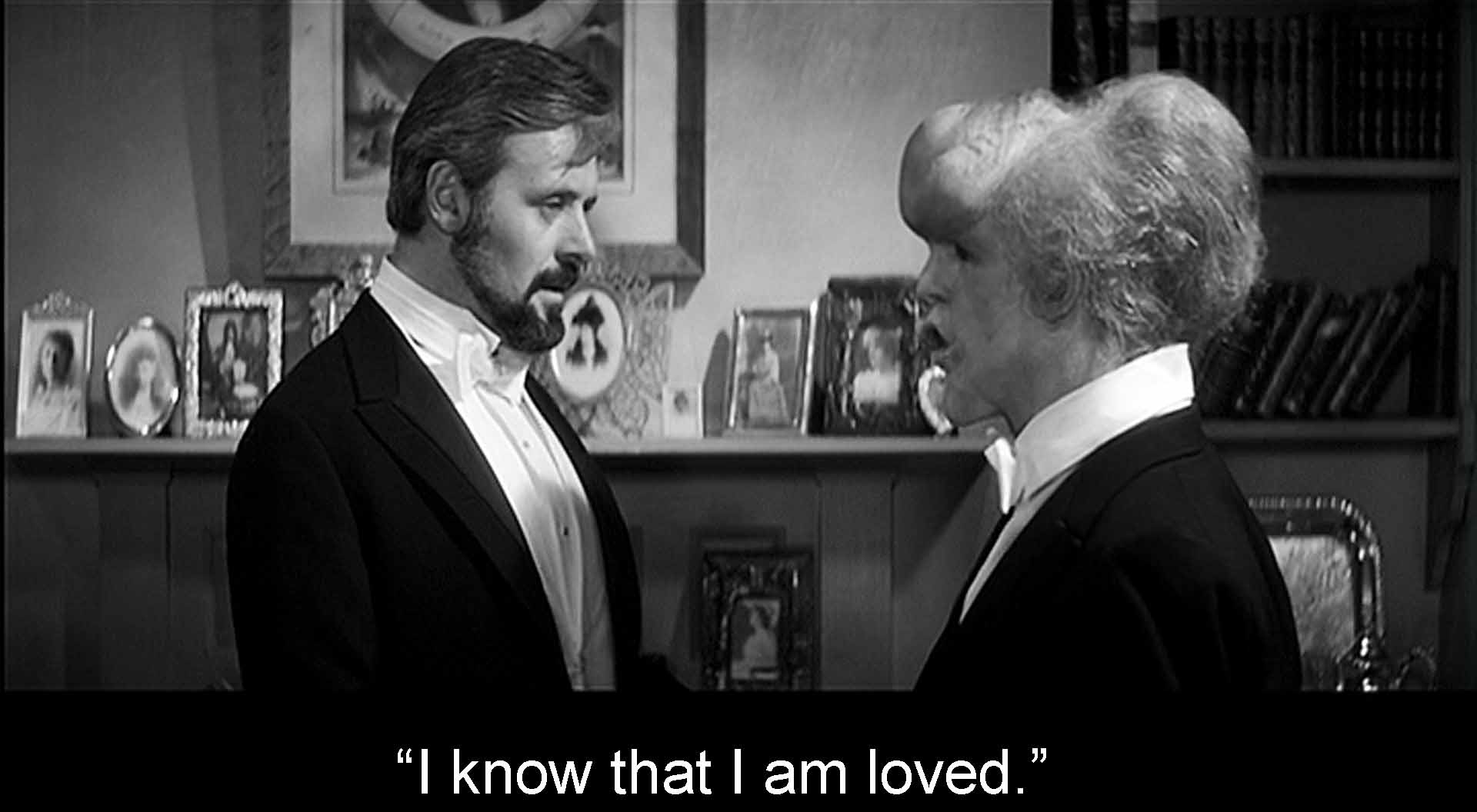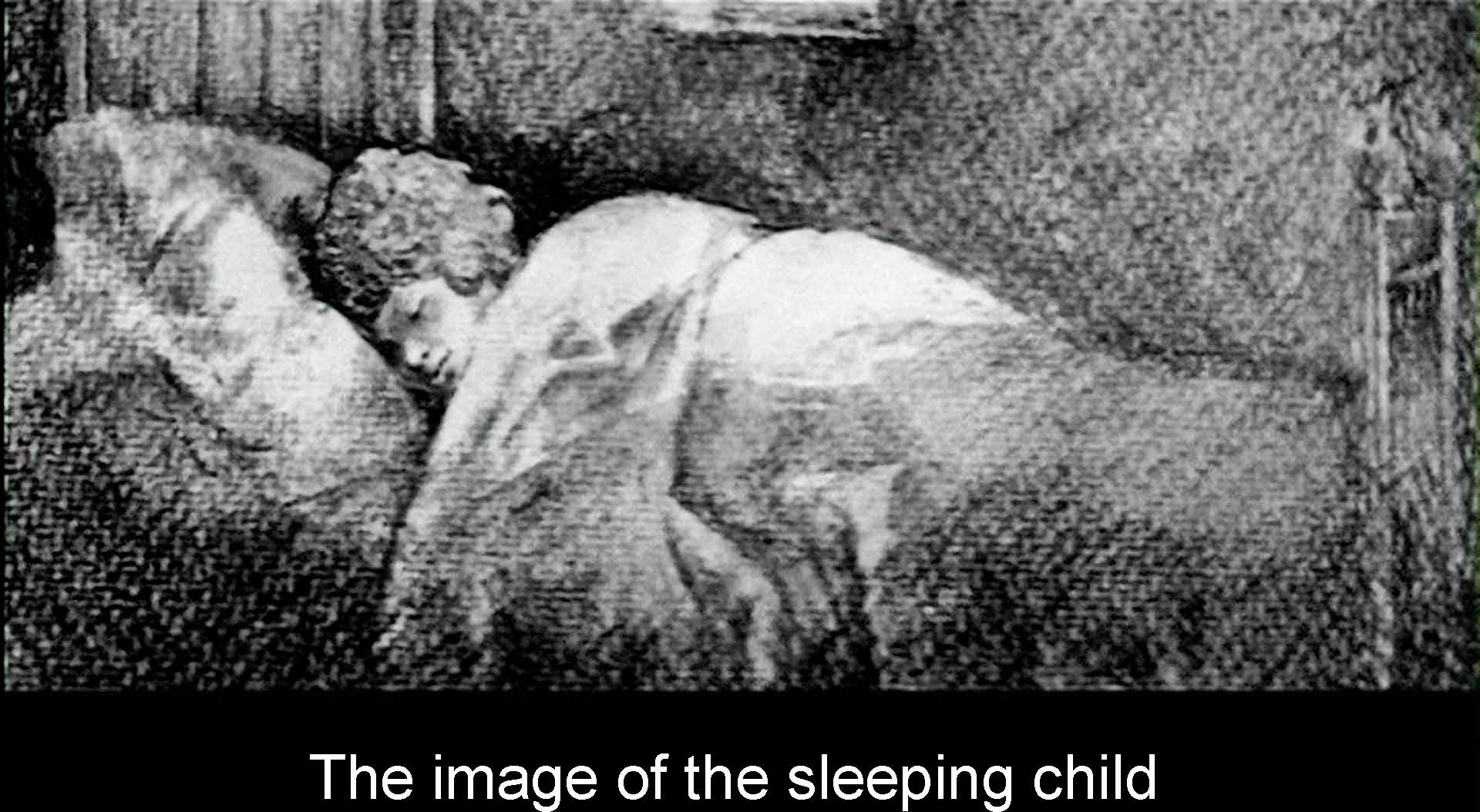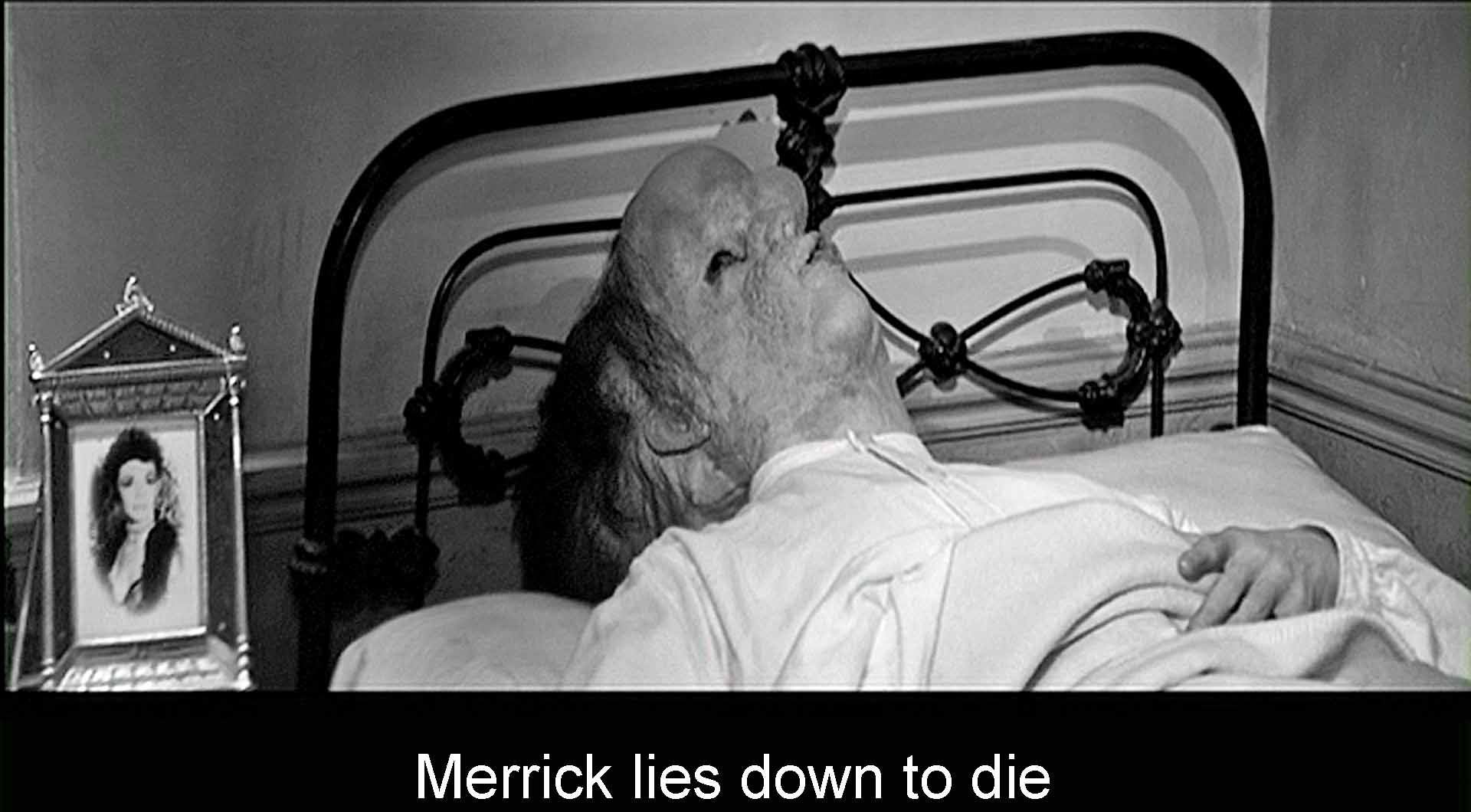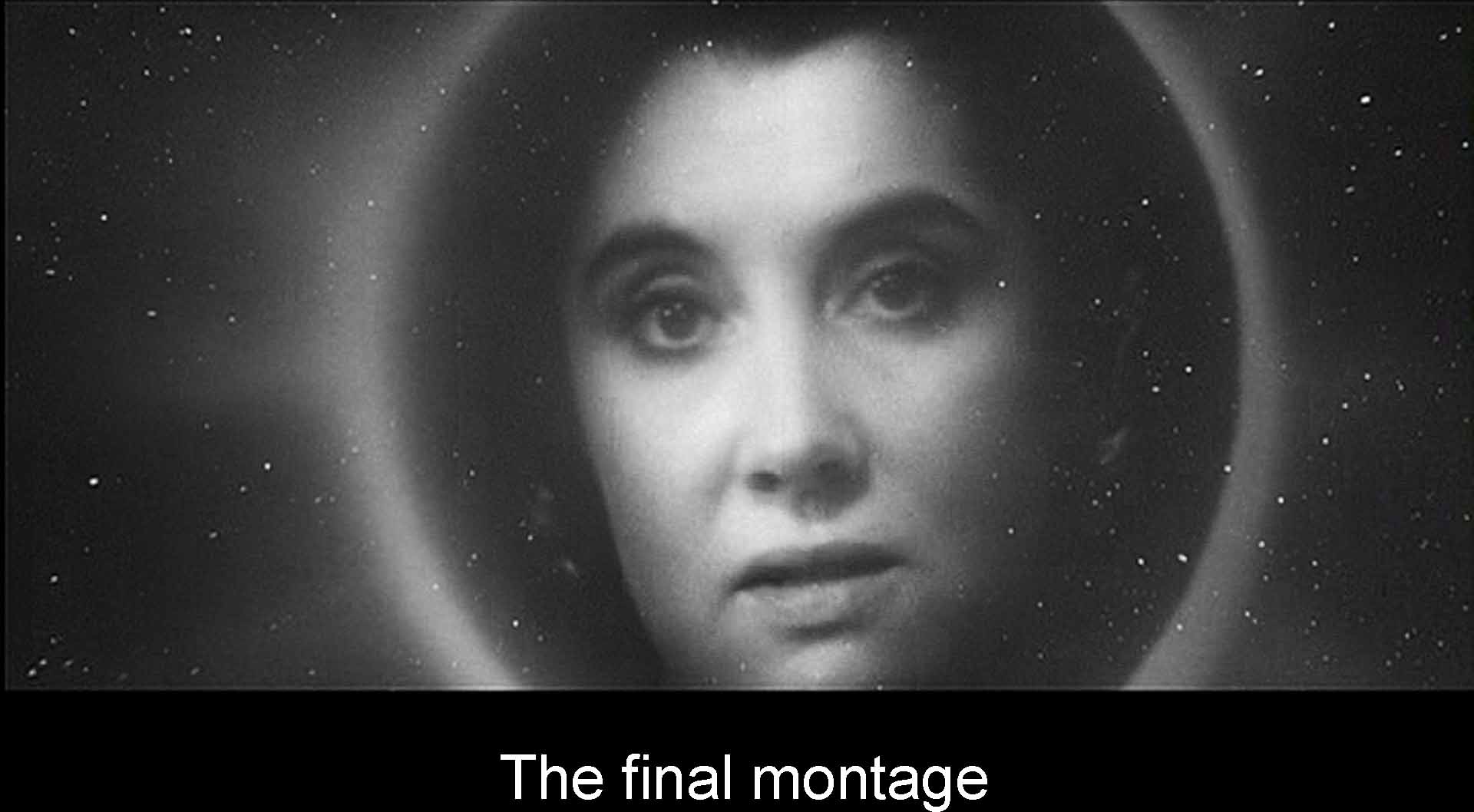“What is a man?,” asked Hamlet. “A beast, no more?” And Elephant Man, in its very title poses the question. What is John Merrick, the horribly disfigured victim-hero of the film? (“Joseph” actually, but “John” in this and other tellings of his story.) There are elephants in the opening sequence, and much later in the film he will be confined with baboons. Confronted by an angry crowd he finally shouts,“I am not an elephant. I am not an animal. I am a human being. I am a man!” This, while he is surrounded by an angry crowd and public toilets.
Lynch seems more interested, though, in another contrast to the human, machines. “Abominable things these machines—you can’t reason with them,“ says Frederick Treves (Anthony Hopkins), the doctor who rescues and cares for Merrick. He is operating on a man horribly mutilated by a machine, and Lynch shows us again and again in this film grim, black Victorian machines and men harnessed to them like machines themselves. Reason doesn’t count for them, just animal muscle.
In the same vein, Lynch includes as recurring images flaring gas flames and clouds of steam, emblems of the Industrial Revolution in late Victorian times, capitalism at its harshest. By contrast, it is Merrick’s ability to remember and recite the 23rd Psalm that convinces the skeptical Carr Gomm (John Gielgud), Treves’ boss, that he is indeed human enough to warrant treatment in the London Hospital.
Is reason enough? Bytes (Freddie Jones), who describes himself as Merrick’s “owner,” reasons, but treats the “Elephant Man” as an “it,” an animal or a machine. So too the night porter (Michael Elphick), who sells peepshow visits to the Elephant Man’s room, reasons well enough.
As the film develops the theme of “what is a man,” it is not reason, but people’s reactions to Merrick that define him and them as human—or not. It is when Treves treats him as a man, not just some weird thing to be shown to the medical society, it is when the nurses stop being terrified by him and relate to him as a patient, it is when two beautiful women speak to him kindly, it is in the finale when the theater audience admires his courage, that both Merrick and those reacting to him acquire humanity. I treasure the exquisite moment when Mrs. Kendal (Anne Bancroft) tells him, after they have together recited Romeo’s meeting with Juliet, “Oh, Mr. Merrick, you’re not an elephant man at all. You’re Romeo.” Ultimately, Merrick can say, “My life is full because I am loved,” and that is when he is most fully human and when his rescuer Treves transcends his own ethical doubts about making Merrick a “show.”
Conversely, when the drunken rabble from the tavern, having paid the night porter, pile into Merrick’s room and abuse him and destroy the model of the church he has been building (another sign of humanity like speech and reason), then he becomes simply a thing or an animal again. Or he becomes one of the throwaway boys who serve Bytes or the hospital or simply work on their own as, say, crossing-sweepers. They are scattered through the film as something less than human (until Bytes’ boy turns on him). Similarly, the freaks in the European show seem no doubt to their audiences something less than human, but they demonstrate their humanity in rescuing Merrick. (And also their resemblance to the freaks in Todd Browning’s famous film Freaks of 1932.) As Merrick says to Treves, when they are setting out for the theater, “My life is full because I know that I am loved. I have gained myself.”
The film ends when Merrick, having triumphed at the theater, chooses to imitate the drawing of a sleeping child on his wall. He lies flat, knowing the weight of his head will suffocate him, and he will die—that is the final sign of humanity, that we can end our own lives.
Lynch, however, complicates this definition of humanity, adding a darker side to it. The film consists almost entirely of a long series of something I don’t have a good word for. “Representations”—perhaps. In other films, Lynch has shown his interest in representations. Or simulations, displays, manifestations, exhibitions, portrayals . . . I’ll settle for “show” with the understanding that I mean everything from an actor’s stage performance to a surgeon’s demonstration of an operation to a photographic portrait.
The Elephant Man is one long series of such “shows”:
The opening montage: a “show” put on by Lynch.
Bytes shows Merrick as part of a freak show.
Treves operates, partly demonstrating.
Treves shows Merrick to “society” (medical society).
Nurse Kathleen (Nula Conwell) sees Merrick and is terrified.
Treves shows Carr Gomm that Merrick can recite the 23rd Psalm.
Night porter shows Merrick to a girl.
Lynch’s show: cutaway shots of smoke, steam, coal, machines.
Two nurses see Merrick in a proper suit.
Treves shows Merrick to his wife.
Merrick shows his mother’s portrait to Mrs. Treves.
Merrick shows Nurse Kathleen his model of St. Phillips’ church.
Merrick is shown to the actress Mrs. Kendal.
Mrs. Kendal gives Merrick her portrait.
Merrick shows Mrs. Kendal his mother’s portrait.
Mrs. Kendal and Merrick recite Romeo’s meeting with
Juliet: “You’re Romeo.”
Nurse Kathleen reads the newspaper account of Mrs. Kendal’s visit.
A series of portraits on Merrick’s mantel of society women.
Merrick is shown to “society” (London elite). “He’s only being
stared at all over again.”
Lynch shows us Merrick’s mother.
Lynch’s show: cutaway shots of Merrick’s hood, pipes, a woman
in agony (from the opening sequence), men working like
machines, smoke, a man showing Merrick himself in a mirror,
an elephant, clouds.
Treves feels guilt about his own showing of Merrick, even as
he is surrounded by “shows,” i.e., objets d’art.
Princess Alexandra makes an appearance and shows a letter
from the Queen.
Merrick receives a dressing case and primps, fancying himself
a ladies’ man.
Merrick makes a model of St. Philips church.
Merrick is shown to the drunks from the tavern.
Bytes shows Merrick in a European freak show.
A London crowd stares at Merrick.
Merrick goes to the theater, sees a pantomime show, and is shown
to the audience.
Merrick signs his cathedral model.
Merrick views a drawing of a sleeping child.
Lynch “shows” us Merrick’s dying moments.
One long string of “shows” by a master showman. And that final audience applauding in the theater— that includes us, doesn’t it?
Many of these showings hint at Merrick as a sexual being: the doctors inspecting his genitals; his mantelful of portraits of society women; his pleasure when pretty women are kind to him; reciting the kissing sonnet with Mrs. Kendal; his fancying himself as a ladies’ man when he is given the dressing case; the drunks forcing some tarts to kiss him; and the nurse being Merrick’s “date” for the theater. Incidentally, the play based on Treves' book had a sex scene. And, as always with Lynch, woman influences for good, here, Mrs. Kendal, Mrs. Treves, Nurse Mothershead, above all, Merrick’s mother.
Is sex what makes us human? Or animal? Or is Lynch saying that what makes us human is the ability to put on these “shows”? Or, perhaps, that that is the failing of artists, that they use other humans simply for “show”? Or, since Treves, Bytes, Mrs. Kendal—everybody— makes a show of Merrick, is it every human’s failing as well as our humanity?
It is after the visit by “society” and the nightmare of the proles and their visit that the ethical issue raised by Head Nurse Mothershead comes to the fore. (She is played by wonderful Wendy Hiller, but note the name!) Isn’t Treves just showing Merrick as Bytes did? “It seems I’ve made Mr. Merrick into a curiosity all over again.” And isn’t he gaining fame as a doctor just as Bytes made money off Merrick by making him into a show? But then Princess Alexandra makes an appearance at the hospital board’s meeting with a letter from Queen Victoria (more show) interpreting the hospital’s (and Treves’) actions as “the Christian thing.”
Shows are central to the ethical issues of the film and especially the opening and close. These are Lynch’s shows. He gives us montages that we can read to shed a rather peculiar light on the rest of the film.
The opening show begins with elephants, then a woman in agony (childbirth? terror at the elephants?), then a cloud of steam (industrial Victorian England), and a baby’s cry. Shortly we will hear Bytes explain the “Elephant Man’s” deformity as caused by his mother being frightened by elephants during the “fourth month of her maternal condition.” This is, of course, barker malarkey. Why, then, does Lynch re-create it in his montage at the opening of the film?
Lynch’s closing show is even more problematic. Merrick lays his head down to die. The camera pans across Mrs. Kendal’s portrait to the portrait of Merrick’s mother and on to Merrick’s model of a cathedral and finally out the window (the same window at which a mirror had horrified Merrick with his own deformity) to the stars. All the time Samuel Barber’s exquisitely mournful Adagio plays. (It has been called the unofficial American funeral anthem—as during the days following the Kennedy assassination.) We hear a woman reciting (”showing”) the opening of Tennyson’s treacly “Nothing will die”: “Never, oh never, / Nothing will die. / The stream flows, / the wind blows / The cloud fleets, / the heart beats. / Nothing will die.” An aurora appears. It gives way to a cloud of Victorian industrial steam that, this time, collapses instead of expanding. Within the aurora, we get the face of Merrick’s mother focusing down, finally, to her eyes. End of picture.
The whole thing is both beautiful and incredibly soppy. Why this from the difficult, surrealist, postmodern David Lynch? I have to believe that he does not believe (did even Tennyson believe?) that “Nothing will die.” Come, come! So what is he doing when he gives us this final show, his show? I think Lynch is creating his characteristic two-world pattern. Like the equally sentimental opening of Blue Velvet, he is creating something unbelievably good to be balanced by something unbelievably bad—here, the horrible world of the Victorian underclass made even more horrible by the hypocrisy and cruelty of the Victorian upper class. In effect, the unconvincing close undercuts the claims of Treves and the board and Carr Gomm and the royals to have done “the Christian thing.” The “Christian thing” in this finale is unbelievable.
In Blue Velvet, Lynch gave us the unbelievably sentimental at the outset. He encouraged us to see the rest of the film with that opening unbelief. Here he gives us the unbelievably sentimental at the end. (I think it would have been more effective at the beginning.) But I have to believe that, as we think back through the movie, the “show” he has given us at the end colors the way I perceive all the “shows” that have gone before. And notably the opening show, the phony montage of Merrick’s mother supposedly being frightened by elephants. I think we are (now!) to understand the filmmaker’s own skepticism at the film he has created. We are not to take it literally (and it is true that Treves’ account on which the film is based and other old accounts are all untrustworthy). In the best postmodern tradition, Lynch gives us a story and simultaneously tells us we are not to believe it. No matter how tellingly he renders Victorian London, it’s only a story. But a marvelous motion picture in the postmodernist manner.
